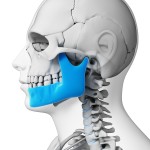
Temporomandibular disorders (TMD) affect between 10–70% of the population. Anterior disc displacement (ADD) occurs in a high proportion of TMD patients, and can be divided into ADD with reduction (ADDWR) and ADD without reduction (ADDWoR). Atrhrography and magnetic resonance imaging (MRI) are used for diagnosis but the use of ultrasonography is increasing. The aim of this review was to assess the diagnostic value of high-resolution ultrasonography (HR-US) in the detection of anterior disc displacement (ADD) of the temporomandibular joint.
Methods
Searches were conducted in the Medline, the Chinese National Knowledge Infra- structure Database and Chinese Biomedical Literature Database. Diagnostic studies comparing high-resolution ultrasonography (HR-US) with MRI or arthrography carried out on patients with anterior disc displacement (ADD) were considered. Risk of bias was assessed using the Quality Assessment of Diagnostic Accuracy Studies (QUADAS) model.
Meta-analysis was performed using a hierarchical summary receiver operating characteristic model (HSROC). The clinical utility of results was assessed using Fagan nomograms (Bayes theory).
Results
- 11 studies involving a total of 1096 subjects were included.
- Weighted sensitivity, specificity and positive and negative likelihood rations from the meta- analysis are shown in the table below.
| HR-US to diagnose ADDWR | HR-US to diagnose ADDWoR | |
| Sensitivity (weighted) | 0.83 (95% CI; 0.75 – 0.88) | 0.72 (95% CI 0.59 – 0.81) |
| Specificity (weighted) | 0.85 (95% CI; 0.76 – 0.92) | 0.90 (95% CI 0.86 – 0.93) |
| Positive likelihood ratio | 6.01 | 7.00 |
| Negative likelihood ratio | 0.20 | 0.32 |
Conclusions
The authors concluded: –
Overall, HR-US was useful for diagnosing ADD, being superior in the diagnosis of ADDWoR compared to ADDWR. However, the negative diagnostic value was lower for ADDWoR than ADDWR. Heterogeneity among studies requires further attention, and multicenter, large-volume, high-quality studies should be conducted to verify the diagnostic utility of HR-US in terms of ADD.
Comments
This review includes 11 studies the majority coming from two research groups. As MRI scans are expensive an arthroscopy is invasive the results from this review are encouraging. The sensitivities and specificities seem reasonable, as does the likelihood ratio (LR). The LR summarises how many times more (or less) likely patients with the disease are to have that particular result than patients without the disease. Likelihood ratios of 10 or greater would suggest a strongly positive test. AS the reviewers suggest additional large well conducted diagnostic test studies are needed to verify the use of HR-US for ADD.
Links
Dong XY, He S, Zhu L, Dong TY, Pan SS, Tang LJ, Zhu ZF. The diagnostic value of high-resolution ultrasonography for the detection of anterior disc displacement of the temporomandibular joint: a meta-analysis employing the HSROC statistical model. Int J Oral Maxillofac Surg. 2015 Feb 19. pii: S0901-5027(15)00019-3. doi: 10.1016/j.ijom.2015.01.012. [Epub ahead of print] Review. PubMed PMID: 25702588.

Don’t miss – Ultrasonography for diagnosing temporomandibular disorders http://t.co/GSX3Z79hey #EBP
Ultrasonography for diagnosing TMD http://t.co/2IImYmQ88L